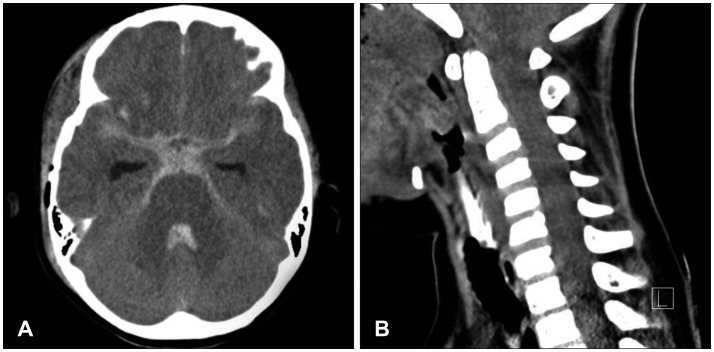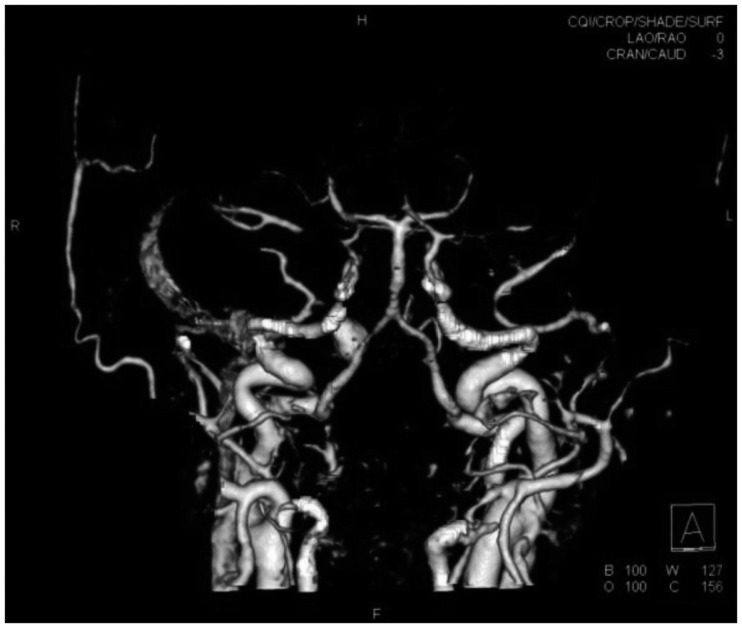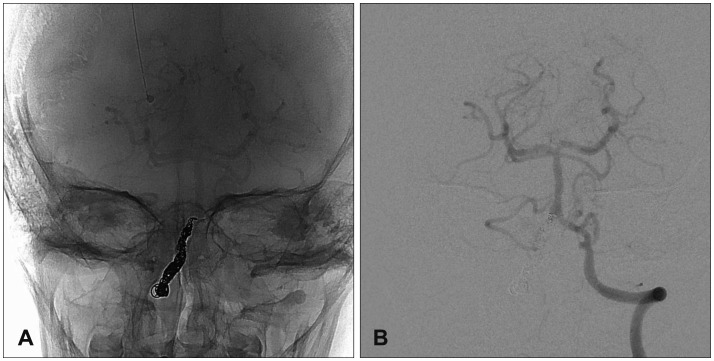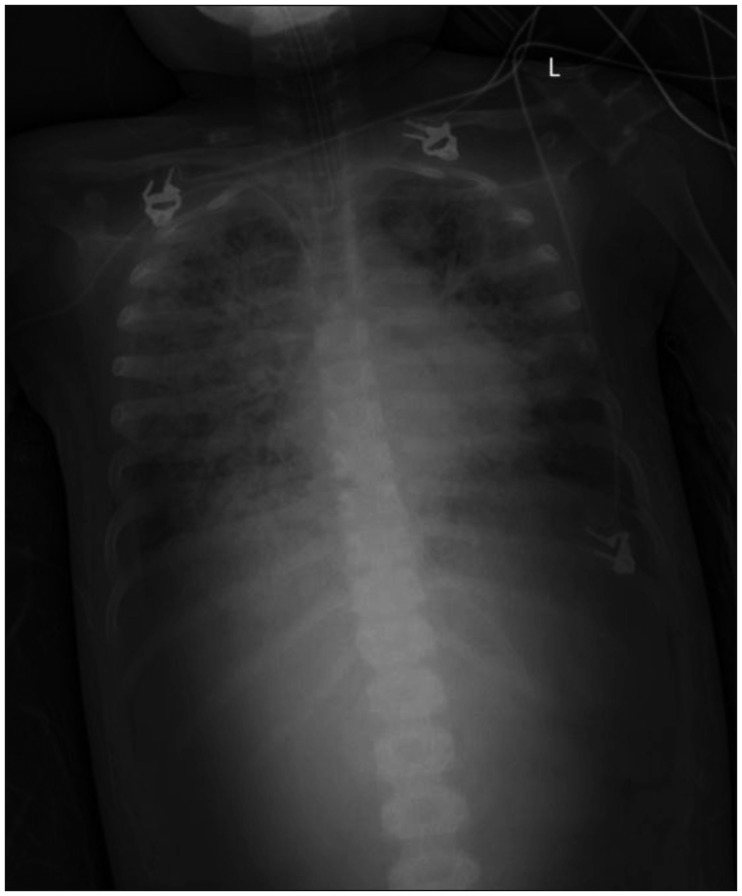Korean J Neurotrauma.
2015 Oct;11(2):154-157. 10.13004/kjnt.2015.11.2.154.
Post Traumatic Pseudoaneurysm Arising from V4 Segment of Vertebral Artery: A Case Report
- Affiliations
-
- 1Department of Neurosurgery, Medical Research Institute, Pusan National University Hospital, Pusan National University School of Medicine, Busan, Korea. medifirst@pusan.ac.kr
- KMID: 2378277
- DOI: http://doi.org/10.13004/kjnt.2015.11.2.154
Abstract
- This case report describes a traumatic pseudoaneurysm arising from the right V4 segment of the vertebral artery, near the origin of the posterior inferior cerebellar artery. Post-traumatic vertebral artery pseudoaneurysm is rare, but associated with a high mortality rate. We report on an extremely rare case of post-traumatic pseudoaneurysm of the vertebral artery with delayed manifestation. A 9-year-old child was admitted to the emergency room after a pedestrian car accident. A computed tomography (CT) scan showed subarachnoid hemorrhage with intraventricular hemorrhage (IVH), multiple facial bones, and temporal bone fracture. External ventricular drainage and decompressive suboccipital craniectomy were performed for acute hydrocephalus and posterior fossa swelling. The patient's clinical condition became suddenly aggravated on the 15th hospital day, and brain CT confirmed appearance of a new 4th ventricle IVH. Digital subtraction angiography revealed a ruptured pseudoaneurysm arising from the right V4 segment of the vertebral artery. Parent artery occlusion using detachable coils was achieved. Despite intensive care, the patient's clinical condition showed continuous deterioration and the patient died of respiratory complications on the 52nd hospital day.
MeSH Terms
Figure
Reference
-
1. Ashley WW Jr, Rivet D, Cross DT 3rd, Santiago P. Development of a giant cervical vertebral artery pseudoaneurysm after a traumatic C1 fracture: case illustration. Surg Neurol. 2006; 66:80–81. PMID: 16793451.
Article2. Biffl WL, Moore EE, Elliott JP, Ray C, Offner PJ, Franciose RJ, et al. The devastating potential of blunt vertebral arterial injuries. Ann Surg. 2000; 231:672–681. PMID: 10767788.
Article3. Coulter I, Shanmuganathan M, Fouyas I, Keston P. A traumatic pseudoaneurysm of the vertebral artery. Br J Neurosurg. 2011; 25:430–431. PMID: 21344975.
Article4. Majidi S, Hassan AE, Adil MM, Jadhav V, Qureshi AI. Incidence and outcome of vertebral artery dissection in trauma setting: analysis of national trauma data base. Neurocrit Care. 2014; 21:253–258. PMID: 24549934.
Article5. Mei Q, Sui M, Xiao W, Sun Z, Bai R, Huang C, et al. Individualized endovascular treatment of high-grade traumatic vertebral artery injury. Acta Neurochir (Wien). 2014; 156:1781–1788. PMID: 24781679.
Article6. Schittek A. Pseudoaneurysm of the vertebral artery. Tex Heart Inst J. 1999; 26:90–95. PMID: 10217474.
- Full Text Links
- Actions
-
Cited
- CITED
-
- Close
- Share
- Similar articles
-
- Internal Carotid Artery Pseudoaneurysm in a Patient Presenting With Recurrent Epistaxis: A Case Report and Literature Review
- Endovascular Stent-Graft Treatment of a Traumatic Vertebral Artery Pseudoaneurysm and Vertebrojugular Fistula
- Endovascular Management of Iatrogenic Vertebral Artery Pseudoaneurysm: A Case Report
- Traumatic Pseudoaneurysm of the External and Internal Carotid Artery Presenting as Epistaxis: Case Report
- Radiological Findings of Vertebral Artery Dissection






